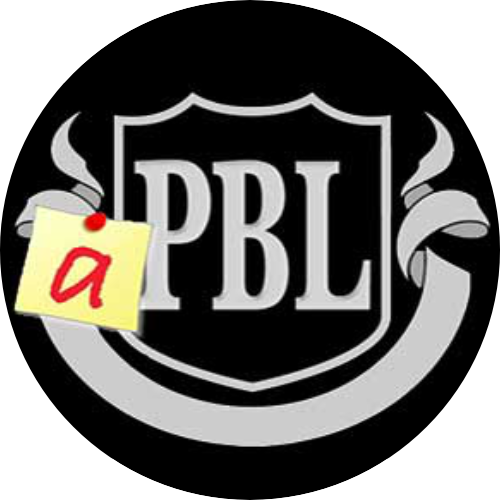OpenPBL for large classes

Carrying out any kind of work with large groups, regardless of the methodology used, is always hard work for the tutor. The number of students is often an impediment to the use of more sophisticated learning methodologies, such as PBL and PjBL, as it implies adding more work and dedicated time on the part of the teacher.
Now let's see how to implement the same activity shown earlier, but slightly modified. This change brings two new features:
- Showing how the same problem can be used in a very different learning activity. Now let's refine the learning demand and use something similar to PjBL instead of PBL.
- Tailoring the activity specification for large classes by sharing it with multiple stakeholder groups. This is, in fact, the reality of most teachers who want to use active learning methodologies and who are not in a curricular PBL scenario.
The activity specification is again presented below, with the text change, in relation to what was previously seen, highlighted in black.
ACTIVITY DESCRIPTION FOR THE STUDENTS
Florianópolis, capital of the state of Santa Catarina (Brazil), is a city with around 550 thousand inhabitants, but polarizes a metropolitan region composed of ten other cities, totaling more than 1.3 million inhabitants. Many of the residents of cities in the metropolitan region work in Florianópolis, especially for the public administration, tourism sector, retail trade, education sector, and software development sector.
Routine displacement between the satellite cities and Florianópolis on weekdays causes long congestion problems at peak hours, reducing the quality of life of its inhabitants. There are different factors identified as motivating this problem, in addition to the transfer of workers between the capital and its satellite cities. We can mention the lack of urban planning, the flow of tourists in the high season (which doubles the city's population), and the high rate of vehicles per capita in the city (second highest in the country) are some of the motivating agents of the problem.
This activity aims to carry out practical feasibility studies to improve urban mobility in the city. The class should be divided into groups, one for each of the options below.
- Group 1 - Vehicle rotation in commercial areas of the city, in order to encourage the use of public transport.
- Group 2 - Transfer of part of the public administration to the continental part of the city.
- Group 3 - Implementation of a ferry boat with transport between satellite cities with the north and south of the island, providing an alternative for workers in Florianópolis who are residents of the satellite cities.
- Group 4 - Collection of tolls to enter the island, using automatic license plate or tag reading systems.
The different groups must collect data regarding:
- Investment estimate for implementation.
- Feasibility of implementation and operation of the solution.
- Impact in terms of reduction of vehicles traveling on bridges.
- Estimated social impact (whether positive or negative).
- Legal aspects involved.
The groups must make a presentation to the class of the results obtained in the respective studies and deliver an activity report.
TIMELINE
- The deadline for delivery of the report of each group is 4 weeks after this presentation of the problem.
- The presentation must be made on the day of delivery of the report. Each group will have between 10 and 15 minutes to present their respective part.
GRADERS
- 60% Tutor
- 30% Group mate grade (average grade, anonymous, with comments)
- 10% Self-assessment
RUBRIC
- 10% Mechanics of report text (tutor only)
- 30% Quality of report content (tutor only)
- 10% Punctuality for report submition and presentation (tutor only)
- 20% Organization and quality of the presentation - group evaluation (tutor and classmates)
- 20% Contribution of each student to the project (groupmates)
- 10% Communication of each student with the colleagues (groupmates)
Each creterion above must be graded using a 0-10 scale.
BIBLIOGRAPHY
- "United Nations Convention on International Multimodal Transport of Goods". https://treaties.un.org. Retrieved 7 May 2019.
- "Modeling and Optimization of Multimodal Public Transportation System: Urban Transit". Mohammad Hadi Almasi, 2016.
- Intermodal passenger transport. https://en.wikipedia.org/wiki/Intermodal_passenger_transport. Retrieved 6 August 2023.
INSTRUCTIONS FOR THE TUTOR
The activity revolves around the framework of mobility in the city of Florianópolis and surroundings, given the problem that the city faces of having large traffic jams at peak hours, or even an accident on important roads in the city. Students should raise the possibilities of modes of transport that can be used to reduce dependence on private vehicles, reducing the flow of cars on the avenues.
The objective is to carry out reasonably in-depth studies on four possible actions to improve urban mobility in the city. Real executive projects are not required, but it is necessary to present a survey of data that is close to a real project, using public data or even collected from government entities.
As a result of learning, the activity aims to show students the complexity of finding solutions to complex problems. The activity of making explicit the barriers that arise for the implementation of ideas that are apparently simple, including legal, political, necessary investment barriers, among others.
The class should be divided into up to four teams and each of them will be responsible for one of the presented possibilities of intervention in the city. Each group must submit a final report, with a maximum of 5000 characters. Each group should also make a presentation to the whole class, so that colleagues from other groups are also informed about all the proposed possibilities.
The activity must be launched in one day, allowing four weeks for the delivery of the work report and the presentation. Each group should have 10 to 15 minutes to present. Punctuality and time keeping must be observed and assessed (as you can see in the rubric).
The student's roupmates should rate social-emotional skills observed during the work weeks for each group colleague.
FULL RUBRIC
Crieteria
- 10% Mechanics of report text (tutor only)
- 30% Quality of report content (tutor only)
- 10% Puntuality (report and presentation)
- 20% Organization and quality of the presentation - group evaluation (tutor only)
- 20% Contribution to work (groupmates)
- 10% Communication with colleagues (group colleagues)
Levels
- All levels will use a scale of 0 - 10 for rating by all parties. Since there are many criteria to be evaluated, we have a simple evaluation scale for each criterion.
- The score given for the criterion Organization and quality of the presentation will be valid for all components of the group, as it is an assessment of the entire group, and not of one of its components.
Analysis of the activity specification
The level of complexity of the above activity is compatible with higher education, where it is common to find classes with more students. What was requested requires more time (four weeks), more coordination of efforts, and documentation of what is done: a report that constitutes an artifact to be submitted to the tutor. With such characteristics, the activity seems to fit what is defined by PjBL, since such methodology has little defined formalism. The use of the OpenPBL framework includes the platform, which allows for a more sophisticated learning evaluation process.
In the presented rubric, the criterion Organization and quality of the presentation has the assessment done (by the tutor) on the group that made the presentation. And this mixes with other assessment criteria, made on each student, and where the combination of who assesses varies from one to the other. Once more it is important to hightlight that the teacher just need to setup the activity, but all the calculations and score ponderation management is managed by the OpenPBL platform.
This time I configured the activity to allow comments by groupmates on each student's assessment. Thus, it will be possible for the assessed student, in addition to the grade, also to receive the justification on which it was based.
If the rubric suffered an increase in the number of criteria in relation to the example on the OpenPBL page for small groups, however, it was simplified by the scale used (0-10). Thus, both the assessment configuration process and its execution end up being much simpler and faster.
Implementation dynamics
The steps given are similar to those of the previous example, with the addition of the novelties of this example. The class in which the activity is presented (1) works in a similar way, with more students participating. After all, we have a whole class, which needs to interact to form groups.
The guidelines for the tutor say nothing about how to group students. Thus, the tutor can choose how to group the students (2):
- determine who will participate in which group;
- allow students to form groups; or
- leave it to the groups to be randomly formed by the OpenPBL app.
The app supports all these grouping options.
Over the following weeks until the closing day of the activity (3), the tutor can interact with the groups during regular classes, or can interact virtually, through instant messaging or videoconferencing. This virtual monitoring can be important for carrying out a more appropriate work, including to arrive at a better quality report.
Upon receiving the reports (via the OpenPBL app) the tutor makes the appropriate assessments (4), and will watch the presentations to evaluate other criteria provided for in the activity. During the presentation or afterwards, colleagues can grade the presentations of groups they are not part of (5).
The same occurs in the evaluation between the components of each group, who can rate the group collection and comment on each evaluated criterion (6). This gives the evaluated student a better opportunity to reflect on how he, his attitudes and ideas are perceived by his groupmates.
Receiving assessments goes until the date set by the teacher, as well as releasing the consolidation of all grades calculated in this tangle of weighting calculations that is performed by the app.
Be aware that both examples cited in this section are available (in English only) in the OpenPBL app. They are available as open educational resources, and you can copy them to your account created through the OpenPBL app. After all, in addition to creating active learning activities, the OpenPBL platform also allows the sharing of created activities, so that educators can help each other implement active learning.







